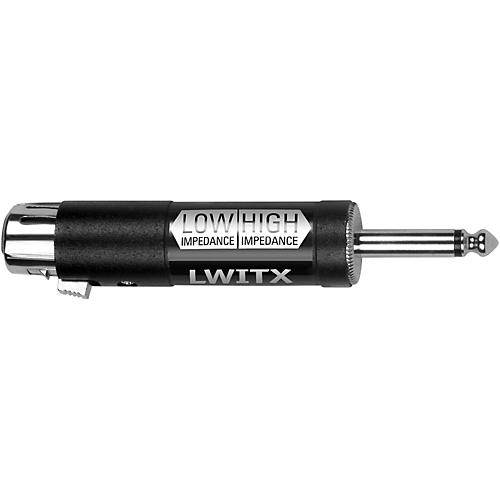Home › Forums › Help/Technical Questions › Superego+ and mic input
- This topic has 9 replies, 3 voices, and was last updated 6 years, 2 months ago by zdenek.
-
AuthorPosts
-
August 27, 2018 at 7:43 pm #85450zdenekMember
Hi everyone!
Newb here. I’m interested in buying the Superego+ for voice processing. I understand that I need a preamp and some sort of impedance adapter after the mic, but I wanted to know if the signal tracker circuit in the SE+ would behave fine for voice, given that it has different envelope and acoustics than a guitar.
I read somewhere that the Superego+ sometimes has problems tracking the signal as the threshold is too high. Is this true? The recommendation was to use a compressor before the pedal. Have you encountered this problem?
And lastly, have any one you used the Superego+ with voice, or any other type of instrument besides electric guitar/bass?
Thanks for your input!
August 27, 2018 at 9:03 pm #124242gvelascoParticipantQuote:…I understand that I need a preamp and some sort of impedance adapter after the mic,You shouldn’t need a preamp after your mic, but you will most likely need an impedance matcher if your mic is not already a high impedance (Hi-Z) mic. If the mic has a 1/4″ plug on it then it is most likely already Hi-Z, so you don’t need an adapter. If your mic takes a cannon (XLR, “three prong”, Lo-Z) cable, then it is most likely Lo-Z. Some mics are internally switchable. But if your mic is Lo-z, then you will most likely need an impedancing matching adapter. They just have a female Lo-z on one end and a 1/4″ plug on the other.
Quote:but I wanted to know if the signal tracker circuit in the SE+ would behave fine for voice, given that it has different envelope and acoustics than a guitar.I read somewhere that the Superego+ sometimes has problems tracking the signal as the threshold is too high. Is this true?
I don’t know about this. I don’t have one, so I haven’t had the chance to experiment with it. Still, this would be a volume / signal level issue, not an “acoustics” issue.
Quote:The recommendation was to use a compressor before the pedal.This MIGHT be a solution for guitar, but be very careful applying this to a mic. You’re more likely to get feedback if the levels aren’t just right. I would definitely try it without first. If it turns out you are having problems with the signal, then you can just put a compressor between the mic and the pedal and use that to boost the signal as much as you need. You shouldn’t need a preamp before the compressor. Most comressors already have plenty of boost built into them.
Quote:And lastly, have any one you used the Superego+ with voice, or any other type of instrument besides electric guitar/bass?Here’s a video of someone running their voice through it.
August 27, 2018 at 9:27 pm #124243zdenekMemberHi gvelasco,
Thank you very much. I was expecting bronze and I got gold—your reply being both enlightening and a money saver!
Quote:I don’t know about this. I don’t have one, so I haven’t had the chance to experiment with it. Still, this would be a volume / signal level issue, not an “acoustics” issue.Point well taken about the signal processing “acoustics”. I’m left wondering, though, if perhaps you have experimented with similar EHX pedals such as HOG2 or POG2? I’ve noticed many people choose either a SE+ with POG2, or a HOG2.
Quote:Here’s a video of someone running their voice through it.I swear I UTFSE! I see this guy is probably an impedance matching adapter like you said.
August 27, 2018 at 10:11 pm #124244EHX STAFFKeymasterIt will be fine with voice!
It works with anything. I even used a cymbal with the superego+ and it worked great.
What mic are you planning on using?
Some mics may need phantom power and in that case a mic preamp would have that that option.
Some thing like a Sure SM57 with a transformer adapter would work fine.August 27, 2018 at 11:35 pm #124245zdenekMemberGot it!
Regarding microphones, I have a shitty 1/4″ one, but I’m planning on using a slightly better one for taking to venues. It has the following specs:
Quote:XLR jack (balanced), Maximum input level: -40dBu@GAIN:max, Input source impedance: 14kΩFrom what I’m reading, this is “Hi-Z”, so I’m spared of any extra arrangements, right?
August 28, 2018 at 1:05 am #124246EHX STAFFKeymasterWhat mic is it?
August 28, 2018 at 3:56 am #124248zdenekMemberActually, it’s a relatively rare microphone model that came bundled with some Korg products such as the MicroKorg. For what it’s worth, the name is Korg GM-23D. It’s got a male XLR connector, so I’ll still need an XLR/Jack adapter.
picture for reference:
https://www.adorama.com/images/300×300/kogm23d.jpgAugust 28, 2018 at 2:46 pm #124251EHX STAFFKeymasterYou are best to write Korg and get specs. I have no idea what they use or if its a condenser mic?
August 29, 2018 at 4:52 am #124257gvelascoParticipantQuote:Actually, it’s a relatively rare microphone model that came bundled with some Korg products such as the MicroKorg…Those MicroKorgs are pretty cool. They can accept any “standard” XLR lo-Z mic. They do not provide phantom power, so they are not expecting an electret (a.k.a. condenser) microphone. So, you don’t have to worry about powering your mic. Just get yourself something like this:
 August 29, 2018 at 5:02 am #124259zdenekMember
August 29, 2018 at 5:02 am #124259zdenekMemberI guess it settled then. Thanks guys, this thread has been very rewarding.
-
AuthorPosts
- You must be logged in to reply to this topic.
